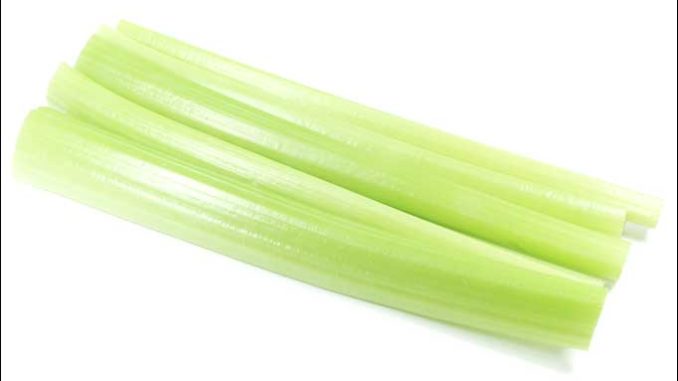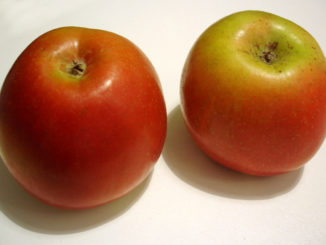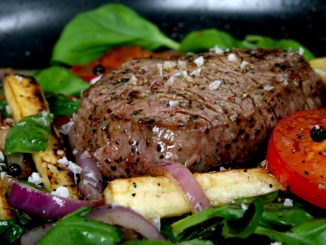
How to Make a Delicious Healthy Celery Soup!
Celery comes from the Umbelliferae family. Also included in the same family are carrots, dill, caraway, poisonous hemlock, cumin, cilantro and parsley. Celery is native to the Middle East and the Mediterranean.
The Romans and ancient Greeks used celery for flavoring, and the Chinese used it for medicine. The celery found at local supermarkets today is of the Pascal variety, which was cultivated first in Michigan back in 1874.
In the United States alone, two billion pounds of celery is grown every year, with California producing two-thirds and Florida producing around twenty percent. Celery root, celery seed and celery stalks are all grown commercially from different varieties of the celery plant.
Wild celery is called smallage. Smallage has a bitter taste and stringy stalks. In ancient times, smallage was used as medicine and seasoning. It was not until the seventeenth and eighteenth centuries that the bitterness was bred out of the smallage, producing the tasty celery that we all know and love today. Still, there are many, many interesting facts that you may not know about celery.
Interesting Facts About Celery
- A shroud in King Tut’s tomb was adorned with garlands of olive leaves, lotus petals, willow, cornflowers and wild celery.
- In Homer’s Odyssey Calypso’s cave is surrounded by wild celery and violet.
- According to Hippocrates, celery is an excellent soother for the nerves.
- In Homer’s Iliad, the Myrmidon horses graze on wild celery and lotus.
- Scientists have discovered that celery contains androsterone, which is a pheromone that is released by the sweat gland of a male human to attract females.
- Therefore, the ancient Romans were definitely on to something when they used celery as a potent aphrodisiac.
- A recipe for a celery dessert served with honey and ground pepper was discovered in Pompeii.
- According to the writings of Aulus Cornelius Celsus, celery seeds are an effective way to relieve pain.
- The first record of the mention of celery in France was not until 1623.
- Madame de Pompadour, who was the mistress of Louis XV of the eighteenth century, often ate truffles and celery soup as part of a “heating diet” that would make her more attractive to the king as well as less frigid. In addition, it is also said that she gave the king celery soup to keep him passionate.
- Casanova ate lots of celery to increase stamina.
- You only need a single ounce of celery seed to grow an entire acre of celery.
The Health Benefits of Celery
Celery has many health benefits. The leaves of the celery plant are high in Vitamin A and the stems are an excellent source of Vitamins C, B6, B2 and B1. Celery is also a rich resource for folic acid, potassium, calcium, iron, sodium, iron, amino acids and magnesium.
Celery has long been known to lower blood pressure, and can be combined with other juices to create formulas that help several other issues. In addition to a number of different benefits, celery is believed to be effective in fighting cancer.
A Celery Soup Recipe
For celery soup that is full of flavor you need:
- 1 head of celery
- 2 apples
- 2 onions
- 1 or 2 cloves of garlic
- A few sprigs of parsley
- 2 ½ to 3 cups of vegetable or chicken stock
- 1 cup of milk
- 2 teaspoons of olive oil
How To Make The Celery Soup
- Cut the leaves and roots off the celery, removing any course strings. Wash the celery thoroughly and chop it.
- Peel the onions and garlic. Slice the onions and crush the garlic. Heat the olive oil in a saucepan; soften the garlic and the onions for just a few minutes.
- Core your apples and cut them up into chunks. Peel them if you like, and then add them and the parsley to the pan.
- Pour in just enough stock to cover the vegetables. Bring it to a boil and let it simmer for around fifteen to twenty minutes, until the celery becomes tender.
- Remove from heat and allow to cool, and then add the milk.
- Pour the mixture into a food processor and use the pulse-chop setting until the vegetables are chopped coarsely. Be careful not to puree your vegetables because you want the soup to be chunky.
- Return your soup to the pan and heat thoroughly before serving. You can add a little extra milk or stock if you want a thinner soup.




Celery is often underused, I think. It seems that we only eat it raw (with ranch dip)! But, it is wonderful cooked, too, and adds great flavoring to soups and stews. It is one vegetable whose flavor blends well with fruits, such as when you use it in a Waldorf salad. It has so many health benefits that it is definitely worth keeping on hands at all times. It has long been thought have a calming effect.
Many people complain that celery tends to go bad quickly. However, this is only true if you remove the stalks from the main head, which many people do in order to cut it to keep on hand for quick snacking. However, if you leave the stalks on the head, celery will keep in your crisper for quite a long time. Just remove the stalks and wash them as you need them. Not quite as convenient, but saves money and waste.